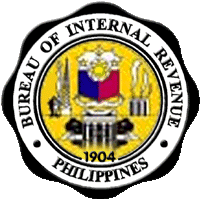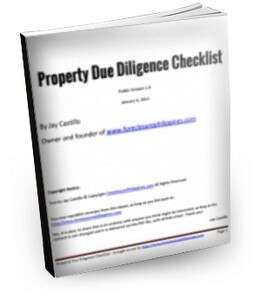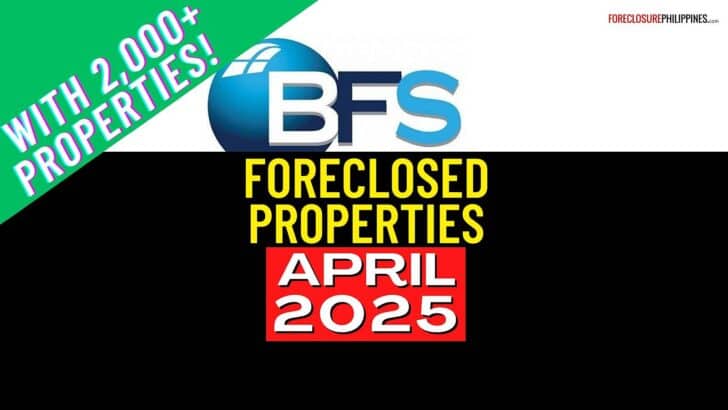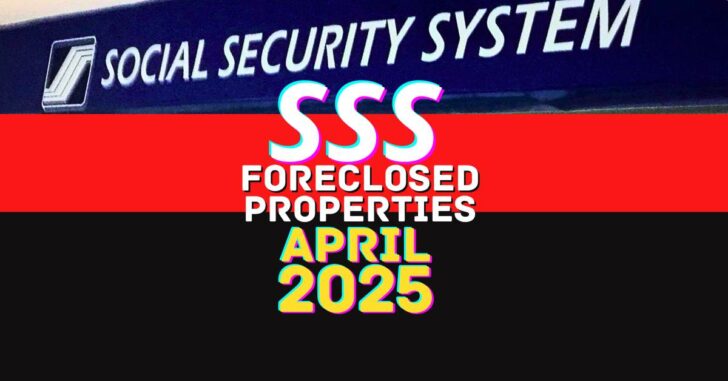Bureau of Internal Revenue (BIR) Revenue Regulations No. 13-99 governs the exemption of certain individuals from the capital gains tax on the sale, exchange or disposition of his/her principal residence.

The full text of Revenue Regulations No. 13-99 can be found below.
July 26, 1999
REVENUE REGULATIONS NO. 13-99
SUBJECT : Exemption of Certain Individuals from the Capital GainsTax on the Sale, Exchange or Disposition of a Principal Residence under Certain Conditions
TO: All Internal Revenue Officers and Others Concerned
SECTION 1. Scope. — Pursuant to Section 244, in relation to Section 24(D)(2) of the National Internal Revenue Code of 1997 , these Regulations are hereby promulgated to govern the exemption of a citizen or a resident alien individual from capital gains tax on the sale, exchange or disposition of his principal residence.
SECTION 2. Definition of Terms. — For purposes of these Regulations, the following items shall have the following meaning:
(1) “Natural person” — shall refer to a citizen or resident alien individual taxable under Sec. 24 of the Code. It does not include an estate or a trust, the provision of Sec. 60 of the Code to the contrary notwithstanding.
(2) “Principal Residence” — shall refer to the dwelling house, including the land on which it is situated, where the husband and wife or an unmarried individual, whether or not qualified as head of family, and members of his family reside. Actual occupancy of such principal residence shall not be considered interrupted or abandoned by reason of the individual’s temporary absence therefrom due to travel or studies or work abroad or such other similar circumstances. Such principal residence must be characterized by permanency in that it must be the dwelling house to which, whenever absent, the said individual intends to return.
(3) “Fully Utilized” — shall mean that the taxpayer has actually commenced with the construction of his new principal residence or has actually entered into a contract for the purchase of his new principal residence within eighteen (18) calendar months from the date of sale, exchange or disposition thereof, with the intention of using the entire proceeds of sale for the acquisition or construction of his new principal residence. Provided, that any expense paid for by the seller in effecting the sale, i.e., documentary stamp tax, transfer fees, broker’s commission, if any, shall be considered as part of the amount utilized.
SECTION 3. Conditions of Exemption. — The general provisions of the Code to the contrary notwithstanding, capital gains presumed to have been realized from the sale, exchange or disposition by a natural person of his principal residence shall not be imposed with income tax, including the six percent (6%) capital gains tax, subject to the following conditions:
(1) Sworn Declaration Requirement. — He shall submit a Sworn Declaration (ANNEX A hereof) of his intent to avail of the tax exemption herein provided which shall be filed with the aforementioned Revenue District Office (RDO) having jurisdiction over the location of the principal residence within thirty (30) days from the date of its sale, exchange or disposition, inclusive of the following:
(a) Duly Accomplished Capital Gains Tax Return (BIR Form No. 1706);
(b) Proof of payment of documentary stamp tax on conveyance of real property;
(c) A sworn statement from the Barangay Chairman that his principal residence is located within the jurisdiction of that Barangay and has been his residence as of the date of sale, exchange or disposition thereof;
(d) A duplicate original copy of the Deed of Conveyance of his Principal Residence;
(e) Photocopy of the Transfer Certificate of Title (TCT) or Condominium Certificate of Title (CCT), in case of a condominium unit (covering the principal residence sold, exchanged or disposed); and
(f) Latest Tax Declaration of the said principal residence (land and improvement).
(2) Post Reporting Requirement. — The proceeds from the sale, exchange or disposition of his principal residence must be fully utilized in acquiring or constructing his new principal residence within eighteen (18) calendar months from date of its sale, exchange or disposition. In order to show proof that positive action was undertaken to utilize the proceeds for the acquisition or construction of his new principal residence within the 18-month reglementary period, he shall submit to the RDO concerned, within thirty (30) days from the lapse of the said period, the following documents:
(a) A sworn statement that the total proceeds from the sale of his old principal residence has been actually utilized in the acquisition or construction of his new principal residence or, if the construction of his new principal residence is still in progress, a sworn statement that such amount shall be fully utilized to procure the necessary materials and pay for the cost of labor and other expenses for the construction thereof;
(b) A certified statement from his architect or engineer, or both, showing the cost of materials and labor for the construction of his new principal residence;
(c) A certified copy of the Building Permit issued by the Office of the Building Official of the City or Municipality where his new principal residence shall be constructed, as well as photocopies of documents (e.g. building specification plan, construction plans, construction cost estimates) submitted with his application for said permit;
(d) In case his new principal residence is acquired by purchase, a duplicate original copy of the Deed of Absolute Sale covering the purchase of his new principal residence.
(3) The tax exemption herein granted may be availed of only once every ten (10) years;
(4) The historical cost or adjusted basis of his old principal residence sold, exchanged or disposed shall be carried over to the cost basis of his new principal residence; and
(5) If there is no full utilization of the proceeds of sale, exchange or disposition of his old principal residence for the acquisition or construction of his new principal residence, he shall be liable for deficiency capital gains tax which shall be computed in accordance with Sec. (4) hereof . Accordingly, only a fractional part (which the utilized amount bears to the gross selling price) of the historical cost of the old principal residence sold shall be carried over to the cost basis of the new principal residence.
SECTION 4. Determination of Capital Gains Tax Due if the Proceeds of Sale, Exchange or Disposition of his Principal Residence has not Been Fully Utilized. — In a case where the entire proceeds of sale is not utilized for the purchase or construction of a new principal residence, the capital gains tax shall attach. In computing the capital gains tax due on the sale of the principal residence, we follow the following steps:
(1) Determine the percentage (%) of non-utilization applying the formula:
Unutilized Portion of GSP
________________________________
=
Percentage (%) of Non-Utilization
GSP
(2) Multiply the % of non-utilization by the GSP or FMV, whichever is higher.
(3) Multiply the product in item (2) above by the rate of six percent (6%).
If the seller fails to utilize the proceeds of sale or disposition in full or in part within the 18-month reglementary period, his right of exemption from the capital gains tax did not arise to the extent of the unutilized amount, in which event, the tax due thereon shall immediately become due and demandable on the 31st day after the date of the sale, exchange or disposition of principal residence. As such, he shall file his capital gains tax return covering the sale, exchange or disposition of his principal residence and pay the deficiency capital gains tax inclusive of the twenty five percent (25%) surcharge for late payment of the tax plus twenty percent (20%) delinquency interest per annum incident to such late payment computed on the basis of the basic tax assessed. The interest shall be imposed from the thirty-first (31st) day after the date of the sale of principal residence until the date of payment, provided, that the date of sale shall mean the date of notarization of the document of sale, exchange, or disposition of principal residence.
Illustrations:
(1) In case the proceeds from the sale, exchange or disposition of his principal residence has been fully utilized to acquire his new principal residence.
— Assume that Mr. Arnold Buendia acquired his principal residence in 1986 at a cost of P1,000,000.00. He sold the said property on January 1, 1998, with a fair market value of P5,000,000.00, for a consideration of P4,000,000.00. Within the 18-month reglementary period, he purchased his new principal residence at a cost of P7,000,000.00.
Computations:
Historical cost of old principal residence P1,000,000.00 Gross selling price (GSP) P4,000,000.00 Fair market value (FMV) of old principal residence at the time of sale P5,000,000.00 Cost to acquire new principal residence P7,000,000.00 (a) To compute for the capital gains tax due. — In this case, Mr. Buendia shall be exempt from the capital gains tax otherwise due from him since the entire proceeds of the sale has been fully utilized to acquire his new principal residence.
(b) To compute for the basis of the new principal residence. — The historical cost or adjusted cost basis of his old principal residence shall be carried over to the cost basis of his new principal residence, computed as follows:
Historical cost of old principal residence P1,000,000.00
Add: Additional cost to acquire new principal residence Cost to acquire his new principal residence P7,000,000.00
Less: GSP of his old principal residence (P4,000,000.00)
P3,000,000.00
Adjusted Cost Basis of New Principal Residence P4,000,000.00
(2) In case the fair market value of the old principal residence is equal to the cost to acquire the new principal residence. — Using the above illustration, if for example, instead of P7,000,000.00, Mr. Buendia was able to acquire his new principal residence at a cost of P4,000,000.00, which is equal to the gross selling price of his old principal residence.
(a) To compute for the capital gains tax due. — In this case, Mr. Buendia is still exempt from the payment of the capital gains tax otherwise due from him because there has been full utilization of the proceeds from the sale of his old principal residence within the 18-month reglementary period.
(b) To compute for the basis of his new principal residence. — Since the fair market value of his old principal residence is equal to the cost to acquire his new principal residence, the historical cost of his old principal residence shall be the basis of his new principal residence, computed as follows:
Historical cost of old principal residence P1,000,000.00
Add: Additional cost to acquire new principal residence Cost to acquire his new principal residence P4,000,000.00
Less: GSP of old principal residence (P4,000,000.00)
–
Adjusted Cost Basis of New Principal Residence P1,000,000.00
(3) In case the proceeds from the sale of his old principal residence has not been fully utilized to acquire his new principal residence. — If Mr. Buendia acquired his new principal residence within the 18-month reglementary period but did not, however, utilize the entire proceeds of the sale in acquiring his new principal residence because he only used P3,000,000 thereof in acquiring his new principal residence, that portion of the gross selling price not utilized in the acquisition or construction of his new principal residence shall be subject to capital gains tax.
Computations:
Historical cost of old principal residence P1,000,000.00 Gross selling price (GSP) P4,000,000.00 Fair market value (FMV) of old principal residence P5,000,000.00 Cost to acquire new principal residence P3,000,000.00 (a) To compute for the capital gains tax due. — To compute for the capital gains tax due, the following formula shall be used in determining capital gains tax due on the taxable portion pertaining to the unutilized amount of the proceeds of sale:
Unutilized Portion of GSP of Old Principal Residence
___________________
x
GSP or FMV of Old Principal Residence, whichever is higher
x
Capital gains tax rate
GSP of Old Principal Residence
=
(P4,000,000 – P3,000,000)
_________________________
x
P5,000,000
x
6%
P4,000,000
=
25%
x
P5,000,000
x
6%
=
P75,000.00
The capital gains tax due from Mr. Buendia for the said unutilized portion shall be P75,000 out of the total of P300,000 capital gains tax otherwise due from the sale of his old principal residence (i.e., P5,000,000 x 6% = P300,000). However, he shall be exempt from capital gains tax to the extent allocable to that portion which he actually utilized to acquire his new principal residence (i.e., capital gains tax portion of P225,000), as shown below:
Fair market value of the principal residence sold P5,000,000.00
Capital gains tax otherwise due thereon (6%) P 300,000 P300,000.00
Capital gains tax allocable to the unutilized portion 75,000 P75,000.00
Amount of exempt capital gains tax allocable to the utilized portion of proceeds from sale (P3,000,000/P4,000,000 = 75% times P300,000) P225,000.00
(b) To compute for the basis of the new principal residence. — In this case, since the entire proceeds was not utilized to acquire the new principal residence, the cost basis to be carried over to his new principal residence shall be equivalent to the proportion of the utilized amount over the GSP applied on the historical cost, computed as follows:
Historical cost of old principal residence P1,000,000.00
Less: Portion of historical cost pertaining to the tax paid unutilized amount (25%) (250,000.00)
Adjusted Cost Basis of New Principal Residence P750,000.00
or another way for computing the adjusted cost basis of the new principal residence is by using this formula:
Utilized Amount of GSP
___________________
x
Historical Cost of Old Principal Residence
=
Amount to be Carried Over to the Cost Basis of New Principal Residence
GSP of Old Principal Residence
applied as follows:
(P4,000,000 – P1,000,000)
_________________
x
P1,000,000
=
P750,000
P4,000,000
SECTION 5. Disposition of the Principal Residence in Exchange for Property Other than Cash. — (1) If the individual taxpayer’s principal residence is disposed in exchange for a condominium unit, the disposition of the taxpayer’s principal residence shall not be subjected to the capital gains tax herein prescribed, provided that the said condominium unit received in the exchange shall be used by the taxpayer-transferor as his new principal residence. In this particular case, the exempt provision of Sec. 24(D)(2) of the 1997 Tax Code shall only apply to the transferor of the principal residence and not to the transferee who shall be subject to the capital gains tax in case his/its condominium unit is treated as capital asset or to the income tax which shall be withheld in accordance with Sec. 2.57.2(J) of Revenue Regulations No. 2-98, as amended, in case the condominium unit is treated as an ordinary asset. However, if the condominium unit is similarly treated by an individual owner as his principal residence, then the same shall also be covered by the exempt provision under Sec. 24(D)(2) of the same Code.
Example: Mr. Buendia assigned and conveyed his principal residence to ABC Realty Corporation in exchange for a condominium unit which Mr. Buendia will use as his new principal residence. Thus, Mr. Buendia is exempt the from imposition of capital gains tax on the exchange of his new principal residence while ABC Realty Corporation, on the other hand, shall be subject to income tax, on its exchange of the condominium unit.
(2) If the said taxpayer’s principal residence is disposed of in exchange for a parcel of land and such land received in the exchange shall be used for the construction of his new principal residence, no income tax or capital gains tax shall be imposed upon the owner of the principal residence. However, the owner of the land shall be subject to capital gains tax or to income tax, as the case may be.
(3) If in the acquisition of his new principal residence, the taxpayer exchanged his old principal residence plus cash or other property, the unutilized portion subject to capital gains tax shall be determined by the difference between the total consideration made on the conveyance of old principal residence transferred (FMV of old principal residence + cash or FMV of other property) and the total consideration received (FMV of new principal residence) for such exchange.
Example: Mr. Buendia assigned and conveyed his principal residence with fair market value of P4,000,000 and in addition paid P2,000,000 to acquire as new principal residence the principal residence of Mr. Yabut. Mr. Yabut, on the other hand, conveyed his principal residence to Mr. Buendia with fair market value of P5,000,000, with the intention of making the property received from Mr. Buendia as his new principal residence. The historical cost of the old principal residence of Mr. Buendia is P1,000,000 while the historical cost of the old principal residence of Mr. Yabut is P500,000.
(a) Computation of capital gains tax due on the exchange of property by Mr. Buendia — No capital gains tax is due from Mr. Buendia for the reason that there has been full utilization of the value of his old principal residence exchanged where in addition to fair market value of his old principal residence of P4,000,000, he still paid cash of P2,000,000 to acquire as his new principal residence the old principal residence of Mr. Yabut valued at P5,000,000.
(b) Computation of cost basis of the new principal residence of Mr. Buendia —
Historical cost of old principal residence P1,000,000.00
Add: Additional cost to acquire new principal residence Cost to acquire his new principal residence P6,000,000.00
Less: FMV of old principal residence at the time of exchange (P4,000,000.00)
2,000,000.00
Adjusted Cost Basis of New Principal Residence P3,000,000.00
(c) Computation of capital gains tax due from Mr. Yabut — Mr. Yabut shall be liable to capital gains tax to the extent of the unutilized portion of the total value of consideration received in the exchange which is computed as follows:
=
(P6,000,000 – P5,000,000)
____________________________
x
P6,000,000
x
6%
P6,000,000
=
P1,000,000
____________________________
x
P6,000,000
x
6%
P6,000,000
=
P60,000.00
(d) Computation of the adjusted cost basis of the new principal residence of Mr. Yabut — In computing for the adjusted cost basis of the new principal residence of Mr. Yabut, only that portion of historical cost corresponding to the unutilized portion of the value received shall be considered. In this case, the adjusted cost basis of the new principal residence is computed as follows:
=
P5,000,000
________________________
x
P500,000
P6,000,000
=
P416,667
In order to avail of the tax exemption from capital gains tax with respect to such exchanges, the aforesaid taxpayer is nevertheless required to acquire his new principal residence within the eighteen (18) month reglementary period, otherwise, he shall be liable to pay the capital gains tax on the disposition of his principal residence.
In all cases of exchange of principal residence for another real property, the liability of documentary stamp tax provided under Sec. 196 of the 1997 Code shall accrue to both parties involved in the exchange.
SECTION 6. Issuance of Certificate Authorizing Registration (CAR) or Tax Clearance Certificate (TCL). — The taxpayer’s filing of the Sworn Declaration of Intent to avail of the capital gains tax exemption in the manner prescribed under Sec. (3) hereof shall be a sufficient basis of the RDO to approve and issue the CAR or TCL of the principal residence sold, exchanged or disposed by the aforesaid taxpayer. Said CAR or TCL shall state that on the sale, exchange or disposition of the taxpayer’s principal residence is exempt from capital gains tax pursuant to Sec. 24(D)(2) of the Code.
SECTION 7. Repealing Clause. — All existing rules and regulations or parts thereof which are inconsistent with the provisions of these Regulations are hereby amended, modified or repealed accordingly.
SECTION 8. Effectivity. — The provisions of these Regulations shall take effect fifteen (15) days after publication in the Official Gazette or in any newspaper of general circulation without prejudice, however, to those persons who have availed of the capital gains tax exemption on account of such sale or disposition during the period from January 1, 1998 to the date of effectivity of these Regulations: Provided, however, that such persons shall be required to comply with the documentary requirements herein prescribed within thirty (30) days from date of effectivity hereof.
(SGD.) EDGARDO B. ESPIRITU
Secretary of Finance
Recommending Approval:
(SGD.) BEETHOVEN L. RUALO
Commissioner of Internal Revenue
Annex “A”
Republic of the Philippines
Department of Finance
BUREAU OF INTERNAL REVENUE
Revenue District Office No. ___
SWORN DECLARATION OF INTENT
I, ___________________________________________ (Name of Affiant), ____________________ (Nationality of Affiant), of legal age, married/single, and with residence or forwarding address at ____________________, hereby voluntarily depose and say:
THAT, I am the registered owner of a certain parcel of land and improvements thereon, described under Transfer Certificate of Title (TCT) No. _________________ of the Register Deeds of _____________, Tax Declaration No. (Land) ____________, and Tax Declaration No. (Improvement) _____________ of the City/Municipality of __________________;
THAT, the aforesaid property is my principal residence;
THAT, I sold the said property to _____________________ (Buyer’s name) with address at _______________ under a Deed of Absolute Sale executed on _____________ for a consideration of ________________ Pesos;
THAT, pursuant to the provisions of Section 24(D)(2) of the National Internal Revenue Code of 1997, and its implementing Regulations, I shall utilize the proceeds of sale thereof in the acquisition or construction of my new principal residence within the eighteen (18) month reglementary period; and
THAT, in the event that the proceeds of sale of the said principal residence be not fully utilized for the acquisition or construction of my new principal residence, in the manner as prescribed by law and its implementing regulation, I hereby undertake to pay the corresponding capital gains tax on such unutilized amount of the proceeds of sale within thirty (30) days after the lapse of the said 18-month reglementary period.
I HEREBY DECLARE UNDER THE PENALTIES OF PERJURY THAT THE FOREGOING ATTESTATIONS ARE TRUE AND CORRECT TO THE BEST OF MY KNOWLEDGE.
Name and Signature of Affiant/Taxpayer
TIN ___________________________
Address ________________________


![[Updated] 754 BDO Foreclosed Properties in April 2025 List (Negotiated Sale) 2 BDO foreclosed properties list for April 2025 now available](https://www.foreclosurephilippines.com/wp-content/uploads/2025/04/bdo-foreclosed-properties-2025-april-728x410.jpg)
![Pag-IBIG Foreclosed Properties (April 2025) Online Public Auction/ Negotiated Sale Listings [Part 4] 3 pag-ibig acquired assets for sale 2025](https://www.foreclosurephilippines.com/wp-content/uploads/2022/05/pag-ibig-acquired-assets-2022-728x410.jpg)




Pingback: How To Get Capital Gains Tax Exemption On The Sale Of Your Principal Residence